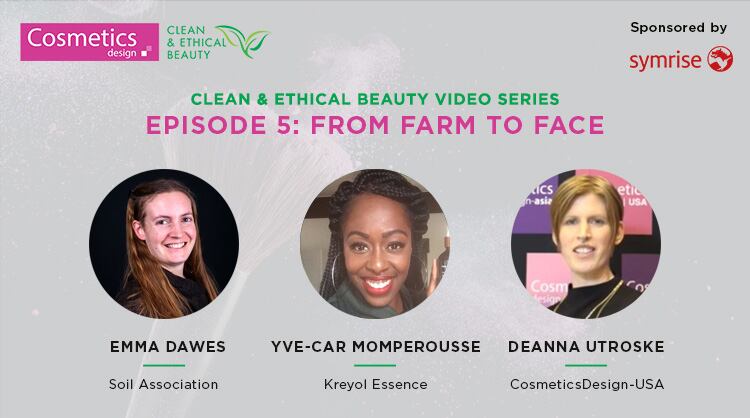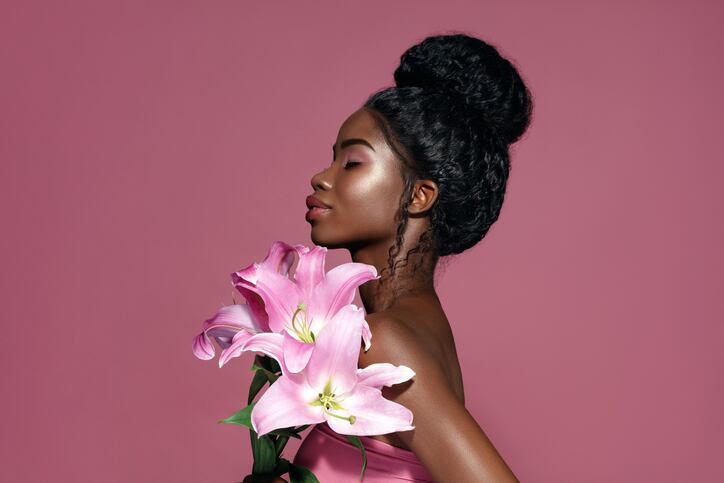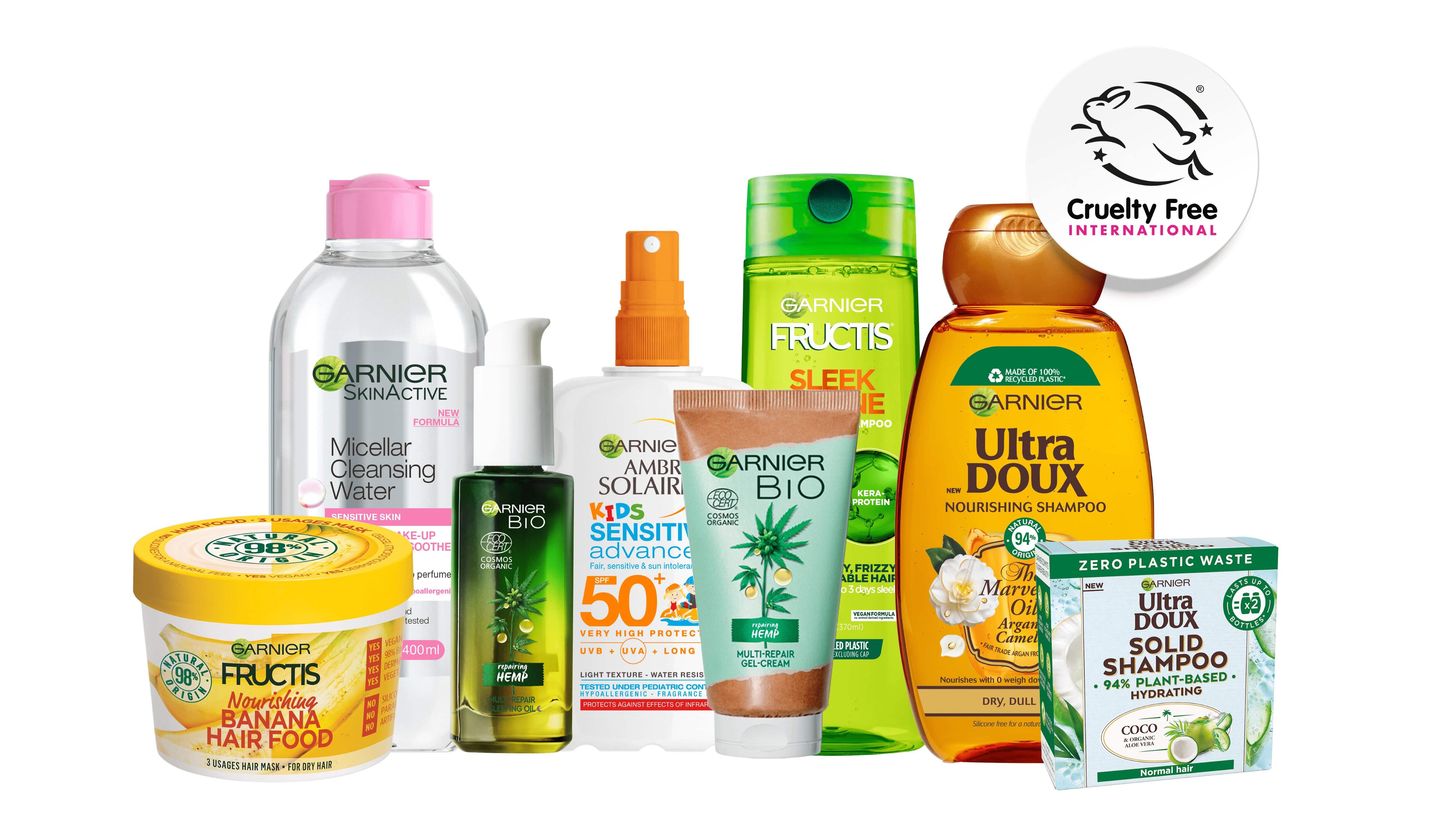Last year, we ran an exclusive Clean & Ethical Beauty video series with CosmeticsDesign and CosmeticsDesign-Asia that featured six 30-minute episodes focused on the core areas in this important topic: Why it Matters – Behind the Brands – In the Lab – Getting the Message Right – From Farm to Face – and Brainstorming the Future.
As the clean and ethical beauty movement continues to gain momentum, we look back at the important takeaways from all the experts who participated in our series.
1. Clean & Ethical Beauty matters – consumers care and businesses can flourish

In our opening episode, we heard from Chris Sherwin, director of reboot innovation (now sustainability innovation and circular design consultant at PA Consulting), and Lia Neophytou, consumer analyst at GlobalData, about why the clean and ethical beauty movement mattered.
“Consumers do have this more holistic sense of their health and their wellbeing, and they do consider factors like sustainability and how ethical a product is really as contributing to their feeling of personal wellness,” Neophytou said.
“So, I think clean and ethical – the whole beauty movement – matters now more to them more than ever because feeling healthy is no longer about simply the foods that they eat or the beverages they drink; they’re really concerned about the products that they’re putting on their skin as well and the broader environmental implications of these,” she said.
There was also now a refined business case to consider, Sherwin said. “Historically, two decades ago, the business case for clean, green and ethical was a reputational and risk one (…) I think it evolved then into a cost and efficiency case where economy equals ecology and green could save you money; saving waste and being efficient. But I think in the last five years or so, what we’ve seen is a really strong growth case come through. And I think that’s quite a new one and, of course, really alluring to brands.”
2. Clean & Ethical Beauty brands – certifications, digital technology and labels

In our second episode, we heard from Jo Chidley, founder of Beauty Kitchen, and Johanna Monange, founder and CEO of Maison 21G, about how their respective businesses had carved out clean and ethical beauty offerings in today’s marketplace.
“We have redesigned and reformulated all of our products into packaging that can be returned, washed and re-used. Using digital technology to track and return the packaging through a national network of reverse logistics,” said Chidley.
On top of this, Beauty Kitchen was B-Corp certified and followed Cradle to Cradle guidelines. Labels was also an important topic for Maison 21G and its personalised perfume offerings, according to Monange.
“We need honest labelling in perfumery. Today, when you buy your product it can read: perfume, water and that’s it. I think it’s the right of the consumer to know what is inside their products. For instance, what are the natural ingredients, the percentage, the level of biodegradability of your perfume, the level of recyclable carbon,” she said.
3. Clean & Ethical Beauty lab work – ‘product briefs’ and using biology ‘as a tool’

In our third episode, we heard from Luciana Coutinho, founder of luluble, and Alison Cutlan, co-founder of biophile skincare, about the true lab-level workings of developing clean and ethical cosmetic and personal care products.
Coutinho said when working to align with a product brief – be it from a brand, retailer or in-house marketing team – it was vital to truly understand every aspect of a formulation.
“Make sure you talk to raw ingredient suppliers,” she said; particularly on the point of extraction processes used and any certifications that could verify these processes.
Cutlan said it was also hugely powerful for formulators to develop clean and ethical beauty products using biology “as a tool” – to grow ingredients like bacteria, yeast and fungi, but also consider the effects of a product on the skin.
“From a formulator’s standpoint, we really have to keep the skin biology in mind; and with the microbiome, we are learning that there needs to be a new paradigm shift,” she said.
4. Clean & Ethical Beauty messaging – what you know, rather than what can’t be defined

In our fourth episode, we heard from Dr. Mojgan Moddaresi, managing director of Personal Care Regulatory, and Aleni Mackarey, chief operating officer of Base Beauty, to find out how industry could get the message right on clean and ethical beauty, particularly given there was no globally-accepted definition.
“I think while it’s very difficult to define this category right now, it doesn’t have to be as difficult to get the message right in your marketing,” said Mackarey.
“The consumer is really craving transparency and honesty from your brand, and you can still deliver that. You know what’s in your products, you know what you can offer, and you know what stories you can tell. So, focus on the things you can share (…) rather than the things you can’t define,” she said.
For those businesses operating in the EU market, Moddaresi said the term ‘clean’ was best avoided and any communication had to be “truthful, honest and fair” – fitting into the six guiding principles found within the Technical Document on Cosmetic Claims under the EU Cosmetics Regulation 1223/2009.
“It is definitely very important to look at these six important principles on what the claim should be and how [brands] have to make the claim,” she said.
5. Clean & Ethical Beauty supply chain – certification and direct farmer relationships

In our fifth episode, we heard from Emma Dawes, technical specialist at the Soil Association, and Yve-Car Momperousse, CEO and founder of Kreyol Essence, about the supply chain challenges and opportunities when developing clean and ethical beauty products.
Certifications like the organic and natural certification for cosmetics COSMOS, of which the Soil Association is a founding member, offered a critical opportunity to ensure supply chain transparency was maintained and verified, particularly on a global level, according to Dawes.
“With ingredients such as argan oil or shea butter, COSMOS certification guarantees that ingredients and products meet the same organic and natural standards wherever they’re from in the world,” she said.
Momperousse said her business worked directly with cooperative farms in Haiti for the sourcing of its Hattian castor oil – preserving traditional skills, providing a nice story but also ensuring a very high-quality ingredient.
“One of the things that we’re really proud of at Kreyol Essence is that we’re able to source ingredients that are really hard to find,” she said.
6. Clean & Ethical Beauty future – lean, honest and digital offerings

In our final and sixth episode, we heard from Helga Hertsig-Lavocah, senior futurologist at Hint Futurology, and Dave McCaughan, founder and storyteller at Bibliosexual, about the potential direction the clean and ethical beauty category might take moving forward.
“Clean is going to start to mean lean. It’s about being lean and being honest,” said Hertsig-Lavocah.
There would also be a transition away from a ‘free-from’ and ‘no’ mentality to a focus on the good ingredients in beauty products – more of a ‘yes’ mentality, she said.
The digital revolution also couldn’t be ignored, according to McCaughan, with the rise of 5G worldwide set to offer opportunities in augmented reality (AR), virtual reality and artificial intelligence (AI), among many other things.
“It’s become inevitable that you have to think about (…) what sort of documentation you have, how are you going to have track and trace? What’s your strategy to show the impact of your products on beauty; on the clean input and output [and] ethical sourcing,” he said.
Interested in a deeper dive into the above issues? You can still watch all our video episodes on-demand either via the respective links above or directly on our dedicated YouTube page.


